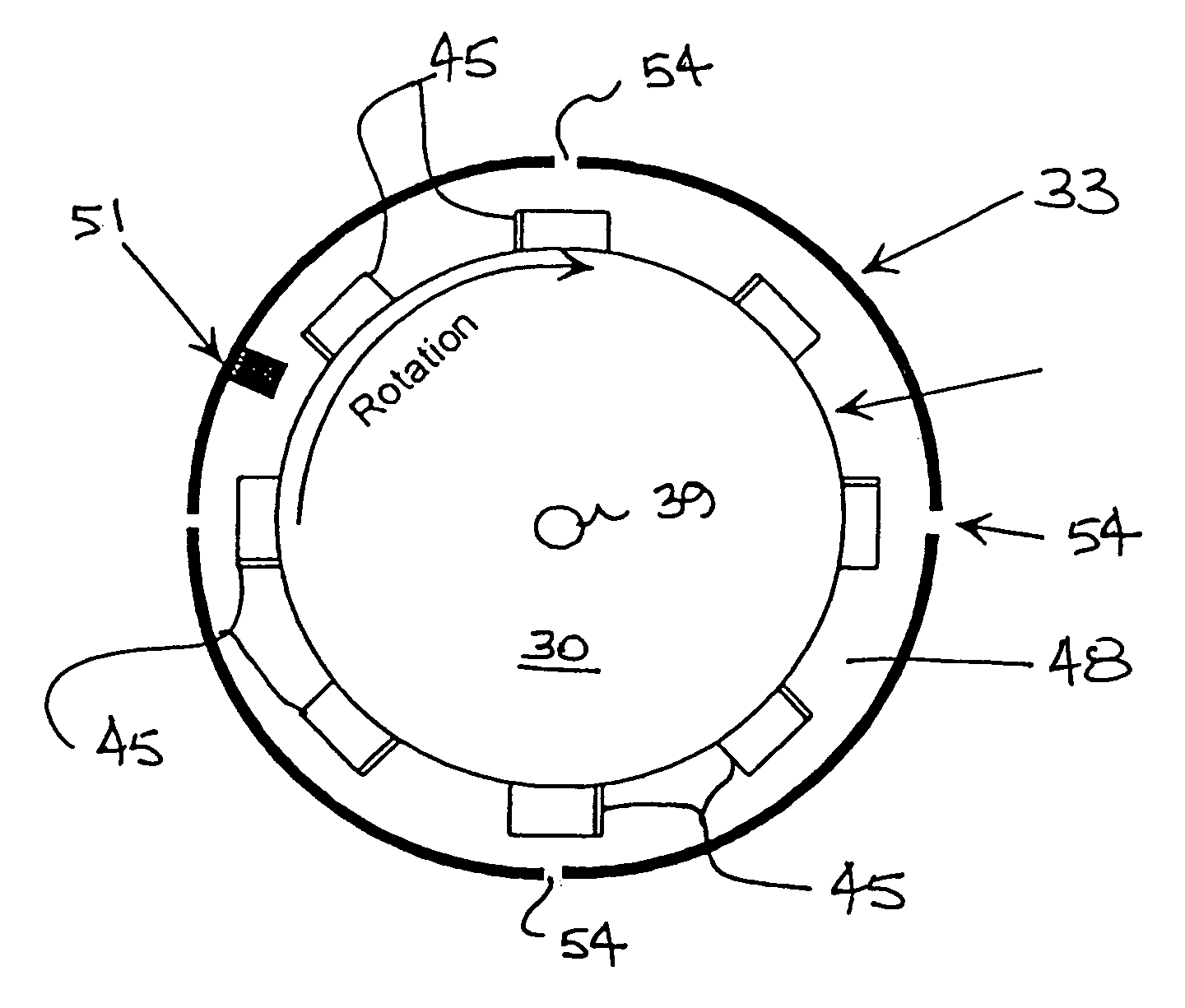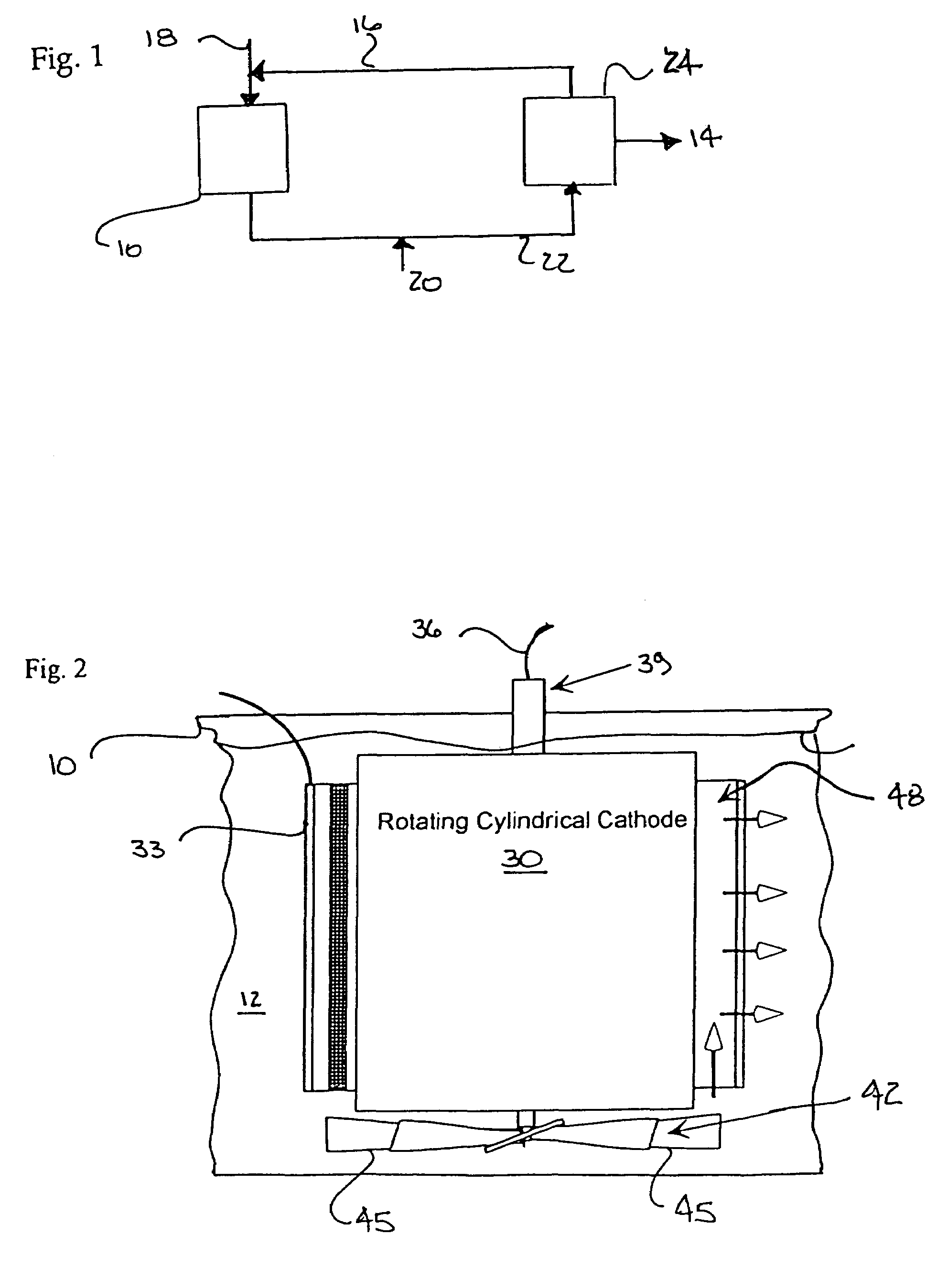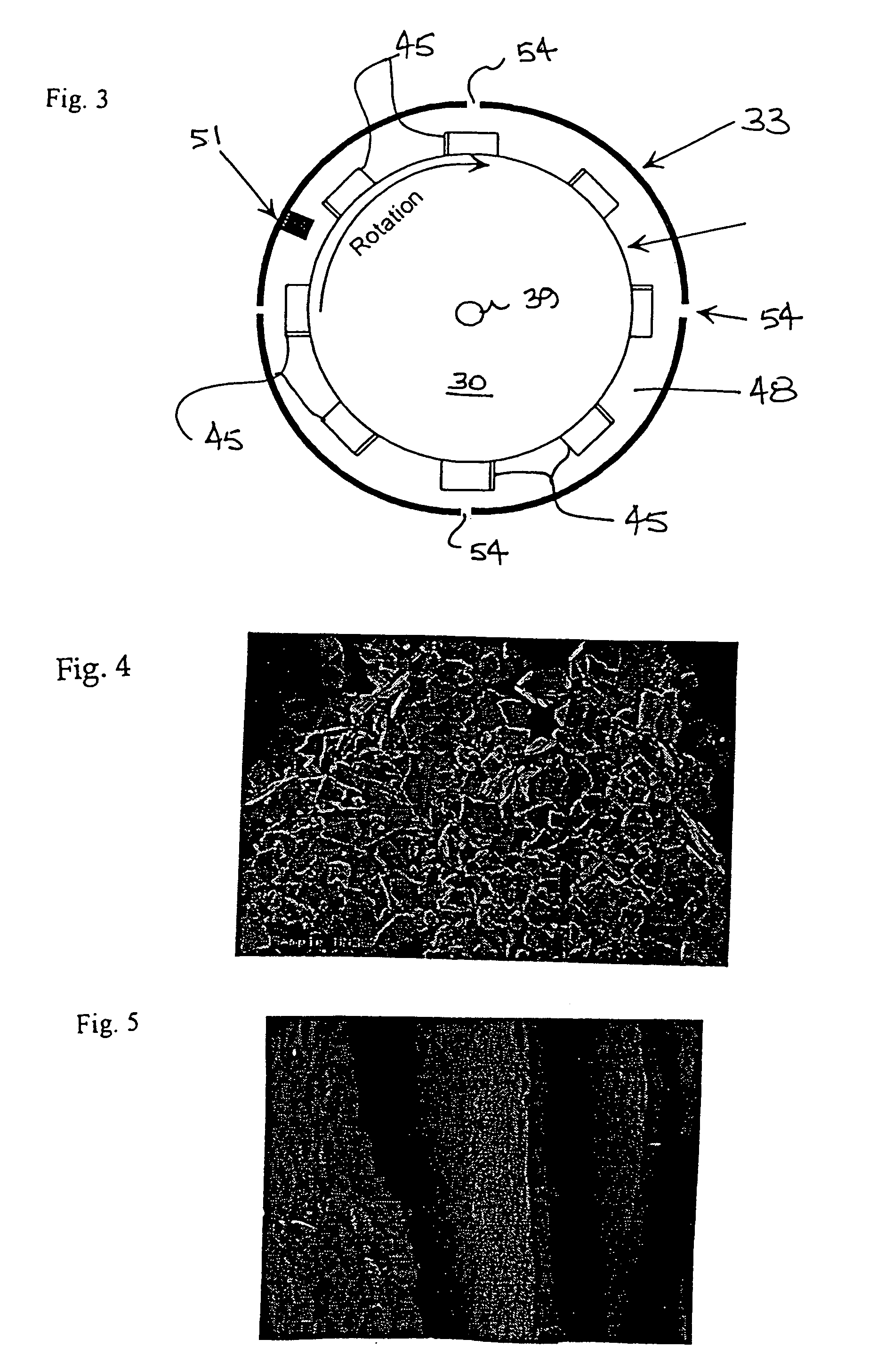Apparatus for making particulates of controlled dimension
a technology of control dimension and electric motor, applied in the direction of magnetism of inorganic materials, magnetic bodies, magnetic materials, etc., can solve the problems of difficult and expensive control of thickness and shape of flat metallic particles, relatively thick flake, and low cost, and achieve the effect of low cos
- Summary
- Abstract
- Description
- Claims
- Application Information
AI Technical Summary
Benefits of technology
Problems solved by technology
Method used
Image
Examples
examples
[0073]The following examples show several trials in which we have demonstrated the process of the present invention to produce iron flake, gold flake, and iron-cobalt flake.
Iron Flake
[0074]1. Mix 192 g ferrous sulfate heptahydrate in 1000 ml of deoxygenated, deionized water.[0075]2. Turn on filtering / collection system. Bubble nitrogen through the bath.[0076]3. Place a carbon steel anode (1015 steel), and a flat, polished titanium (6A1-4V) cathode, like that in FIG. 5, into bath in opposing positions and hook up electrical connections.[0077]4. With a rectifier, apply a current density of 20 to 40 amps per square foot for 8 seconds.[0078]5. With a sonicator at approximately 80% power for 20 seconds, sweep across total area of cathode, approximately 1 inch away from cathode.[0079]6. Repeat steps 4 and 5 to prepare the desired amount of particles.[0080]7. Collect particles magnetically in the filtering / collection system.
[0081]FIGS. 4 and 5 show typical iron flake made by this process.
Go...
PUM
| Property | Measurement | Unit |
|---|---|---|
| pressures | aaaaa | aaaaa |
| temperatures | aaaaa | aaaaa |
| diameter | aaaaa | aaaaa |
Abstract
Description
Claims
Application Information
 Login to View More
Login to View More - R&D
- Intellectual Property
- Life Sciences
- Materials
- Tech Scout
- Unparalleled Data Quality
- Higher Quality Content
- 60% Fewer Hallucinations
Browse by: Latest US Patents, China's latest patents, Technical Efficacy Thesaurus, Application Domain, Technology Topic, Popular Technical Reports.
© 2025 PatSnap. All rights reserved.Legal|Privacy policy|Modern Slavery Act Transparency Statement|Sitemap|About US| Contact US: help@patsnap.com



